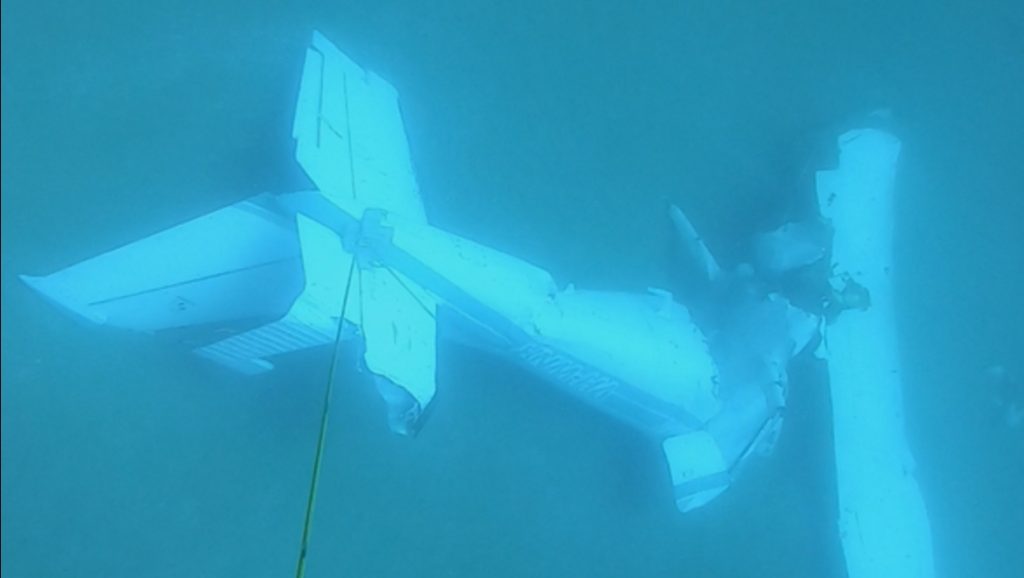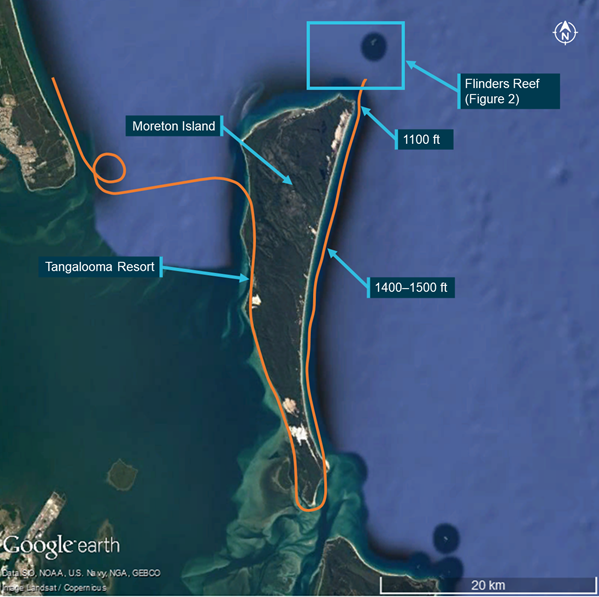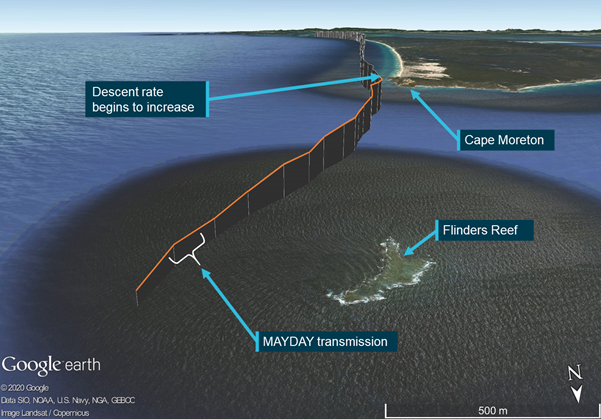
The Australian Transport Safety Bureau has yet to identify what caused a Cessna 182 to crash into the sea near Moreton Island in January, killing a husband and wife.
An ATSB preliminary report found good visibility on the day as well as no pre-existing defects with the recovered engine and propeller. The pilot, meanwhile, only recently had his licence reissued and had accumulated 1,700 hours flying experience over decades in Australia and Africa.
The bodies of the couple, aged 70 and 52, were never recovered, and it took a week to find the wreckage of the 1978-manufactured plane in 30 metres of water, north-east of Flinders Reef, Queensland.
ATSB director transport safety Dr Mike Walker said, “In addition to the examination of the recovered components, the ongoing investigation will include the examination of the aircraft’s maintenance and operational records as well as video footage of the wreckage, pilot qualifications and medical history and further analysis of recorded radio, radar and engine monitoring data.”
The Cessna 182, registration VH-WNR, left Caloundra Airport at 3:30pm on 22 January as a private sightseeing flight.
The aircraft flew south over Bribie Island and onto Moreton Island. At 4:06pm, when the aircraft was overhead Tangalooma, the pilot radioed that he intended to head south to the end of the island and then north up the eastern side of the island.
The ATSB’s preliminary examination of the flight path indicates the aircraft passed the northern tip of the island at about 1,100 feet in a shallow descent and continued towards Flinders Reef.
The aircraft’s speed and descent remained stable until about 4:25pm when the descent rate began to gradually increase. The pilot made a mayday call at 4:26pm east of Flinders Reef while descending through 300 feet at a ground speed of 115 knots.
Air traffic control attempted to establish contact but no further transmissions were received.

Initial analysis of radar data suggests the aircraft continued north-east for another 15 to 20 seconds after the transmission before crashing into the sea.
“Examination of underwater footage of the aircraft showed damage to the cabin, indicating the impact with water was unlikely to be survivable,” Dr Walker said.
An aerial and maritime search was launched, but the aircraft was not located for another week, on 29 January, north-east of Flinders Reef. The bodies of the passengers, who are still unnamed, were never located.
The pilot had previously flown in Africa and Australia decades earlier, before an extended break from flying until late 2019.
After conducting 13.5 hours training he was reissued a Private Pilot Licence (Aeroplane) on 17 October 2019 with a class rating for single-engine aeroplanes.

He also held a Class 2 Aviation Medical Certificate that was issued on 17 October.
The next stage of the investigation will focus on:
• Recovered components including engines and propellers;
• Aircraft’s maintenance and operational records;
• Video footage of the wreckage;
• Pilot qualifications, experience and medical history;
• Recorded radio, radar and engine monitoring data.
















Lee
says:No one wants to admit that the bodies were never located because they were eaten by marine life.
Doug Bright
says:So sad to hear the family were never found.
Also sad that yet one more great plane, in what appears to be excellent condition, has been lost. With the out-of-reach prices of newer models, wonderful aircraft like this are important in the second hand market and their utility and longevity is testiment to their designs and build quality for the price at the time.
I look forwards to hearing about the recovery and investigation.
Doug
(former owner and pilot C172 and C337G)
K
says:You might want to change the caption on the picture of the 182 “similar” to the one that crashed… unless your story is incorrect re crashed aircraft rego, it IS the crashed aircraft…
ROY F FORDHAM
says:Vey sad, the 182 is a very nice airplane, this sounds very much like ‘engine failure’,but the cause will not be revealed until the airplane is fully examined.